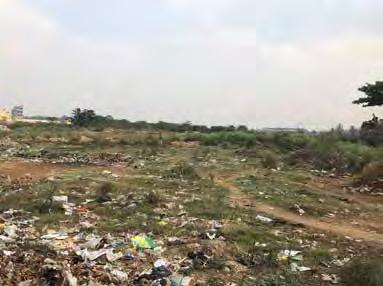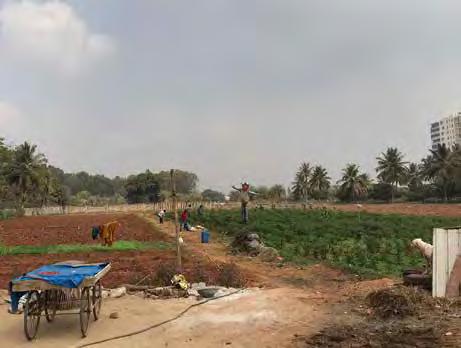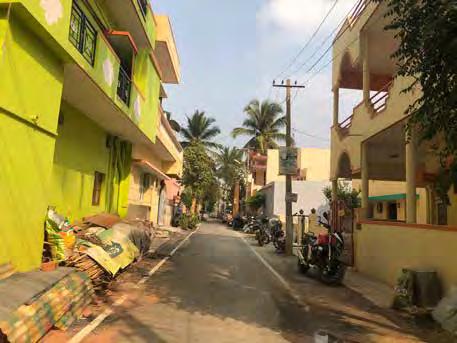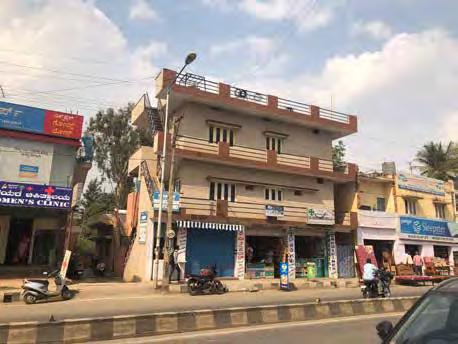
2 minute read
community survey
Through formal surveys and informal conversations, we gathered local information from 68 Yelahanka residents. One-quarter were small business owners, one-qarter were housewives, and one-quarter were laborers. Half were female, half were under 40 years of age, and many (n=59) were Hindu.
SITE SURVEY_ YELAHANKA (RESIDENTS)
1. What is the source of your food? (Tick Multiple)* i. Self-Grow ii. Grocery Store iii. Roving Carts iv. Mandis v. Other_______________
2. Do you have a garden and what do you grow there? (If Yes,then)* i. Vegetable________________ ii. Fruits________________ iii. Crops___________________ iv. Others_______________
3. Where do you go for recreation? (Mark in Map)*
4. Where do you go for your daily routine? (Tick Multiple)* i. Work ii. Market iii. Shopping iv. Worship v. School vi. Others________________
5. In your opinion which of these is a priority concern about waste in the area? (Tick one)* i. Littering of waste ii. Effect on human health iii. Effect on environment iv. Others________________
6. How does you treat your household waste? ___________________________________________________________________________________________
7. What would you like to have in your community? (Tick Multiple)* i. Home Garden ii. Community Garden for socializing iii. Collective farming iv. Individual market farms v. Food forests vi. Others____________
Reason:______________________________________________________________________________________
8. What do you think is the most important issue in this community?
9. How has the place changed over time? How was it used to be? ___________________________________________________________________________________________
Time Date
Yelahanka’s Community Vision Gender
The results of the community survey indicate that the key issues that the community in Yelahanka want to be addressed included: water availability, lack of open parks and green spaces, waste management, traffic problems, and lack of children’s play areas. Other issues of lower priority were: pollution, drainage, work opportunities, organic food shortage, mosquitoes, lack of vegetation, and poor infrastructure.
Synthesis
Visioning Workshop
A visioning workshop was held in the studio to better understand the context of Yelahanka. Each student took part in this activity and shared ideas on the board. Later, everyone voted for the most important issues and strengths in Yelahanka. Some of the important strengths, weaknesses, opportunities and threats are listed below to better understand the context.


Internal EXternal
Strengths
• People are willing to participate in agricultural activities
• Lakeside ecology and habitat for plant and animal species
• Lake front development
• Surrounding land near the lake is fertile
• Existing connection between people and religion
Weaknesses
• Less availability of water for daily use
• Usage of the lake (limited access)
• Lack of urban greening
• Lack of public open recreational spaces and children’s play spaces
Scanned by CamScanner
Opportunities
• Government land as potential development site
• Channelizing lake water for productive landscape
• Rooftops could be utilized to grow fruits and vegetables
• Potential for re-using organic waste and greywater
Threats
• Urban encroachment of the open spaces
• Water and soil pollution: low water quality, leading to soil pollution
• No government support
• Young people moving out to pursue better job opportunities
Scanned by CamScanner
Environmental condition










Dwelling diversity
Cultural diversity










